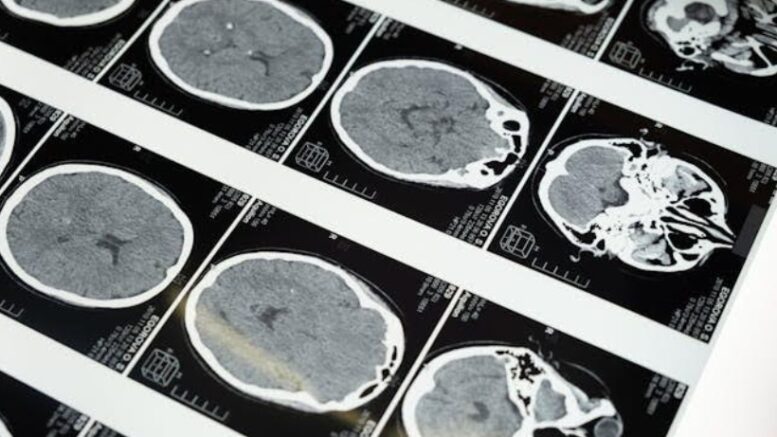Facing a diagnosis of glioblastoma, a form of brain cancer, can be a daunting and complex journey. This article aims to provide you with essential information about glioblastoma, from its characteristics to treatment approaches, helping you navigate the challenges associated with this aggressive brain tumor.
1. Knowledge about Glioblastoma
The complexity of glioblastoma goes beyond its aggressiveness and necessitates a thorough understanding from all angles. Because its symptoms are similar to those of other brain disorders, doctors struggle to diagnose patients in the early stages, which calls for a more sophisticated diagnostic strategy. Scientists are always trying to figure out the complex chemical and genetic mechanisms underlying the aggressiveness of glioblastoma in order to find new targets for treatment approaches. Glioblastoma patients and their families deal with the psychological and practical challenges of therapy, underscoring the importance of comprehensive support networks. The increased knowledge of glioblastoma in its clinical, scientific, and human components is driving coordinated efforts to enhance prognosis and quality of life for individuals impacted by this powerful brain tumor.
2. Diagnosis and Imaging
Glioblastoma diagnosis necessitates a thorough and systematic approach, with imaging tests, most notably magnetic resonance imaging (MRI), at the forefront of this process. The complexity of diagnosis stems from the possibility of symptom overlap with other brain disorders, highlighting the need for a comprehensive evaluation to ensure precision. In addition to making the tumor clearly visible, advanced imaging techniques also provide important information on the tumor’s location, size, and possible effects on nearby brain structures. Modern imaging and diagnostic techniques work together as a foundation, assisting medical professionals in making educated judgments and creating individualized treatment regimens that are specific to each patient’s case of glioblastoma.
3. Methods of Treatment
Glioblastoma is treated with a multimodal approach that includes surgery, radiation therapy, and chemotherapy. The goal of surgery is to remove the tumor, but because glioblastoma is infiltrative, it can be difficult to remove completely, which is why supplementary therapies are important. After surgery, chemotherapy is used to treat cancer cells that are dividing quickly and radiation therapy is used to target any remaining cells. The tumor’s innate resistance and chance of recurrence make treatment options ineffective in the face of these obstacles. Current investigations are examining novel methodologies, like immunotherapy and precision medicine, which provide promising prospects for enhanced results. Although glioblastoma manifests as an aggressive tumor, there is hope for improving the quality of life for those with this aggressive brain cancer due to a comprehensive grasp of treatment modalities and ongoing breakthroughs.
4. Prospects and Difficulties
Managing glioblastoma requires overcoming both the disease’s severe prognosis and significant challenges. The high risk of recurrence and resistance to traditional treatments highlight how difficult it will be to manage this illness in the long run. Repeated incidents highlight how crucial it is to make educated decisions while dealing with growing medical complexity. As patients and their support networks struggle with the psychological effects and financial costs of treatment, knowing the prognosis becomes crucial. Strong and cohesive support is necessary for handling treatment-related side effects, handling uncertainty, and overcoming logistical obstacles. A glimmer of optimism in the face of these overwhelming challenges comes from current research and clinical trials, which raise the prospect of better results.
5. Advancements in Research
The relentless pursuit of knowledge is unveiling groundbreaking insights into the molecular and genetic intricacies of this aggressive brain tumor. Current research endeavors investigate novel therapeutic alternatives, ranging from immunotherapy to targeted medicines, which hold the potential to revolutionize our methodology. Collaborative efforts across multidisciplinary teams are unlocking the tumor’s heterogeneity, opening the door to individualized treatment plans based on each patient’s unique genetic profile. Artificial intelligence and imaging technology advancements improve the accuracy of diagnosis, and big data analysis identifies possible therapy targets and biomarkers. These collaborative initiatives are a beacon of hope, leading the field of glioblastoma research toward triumph over this formidable opponent and ushering in a new era in the development of neuro-oncology.
Conclusion
Glioblastoma is a powerful foe in the field of brain cancer, presenting special difficulties that call for comprehensive knowledge. Through investigating its complexity, figuring out the intricacies of diagnosis, and investigating new treatment options, people and the networks that support them can learn a great deal about this unforgiving enemy. When faced with these obstacles, knowledge turns into a potent weapon that helps people make wise choices and supports further efforts to improve outcomes for glioblastoma patients.
